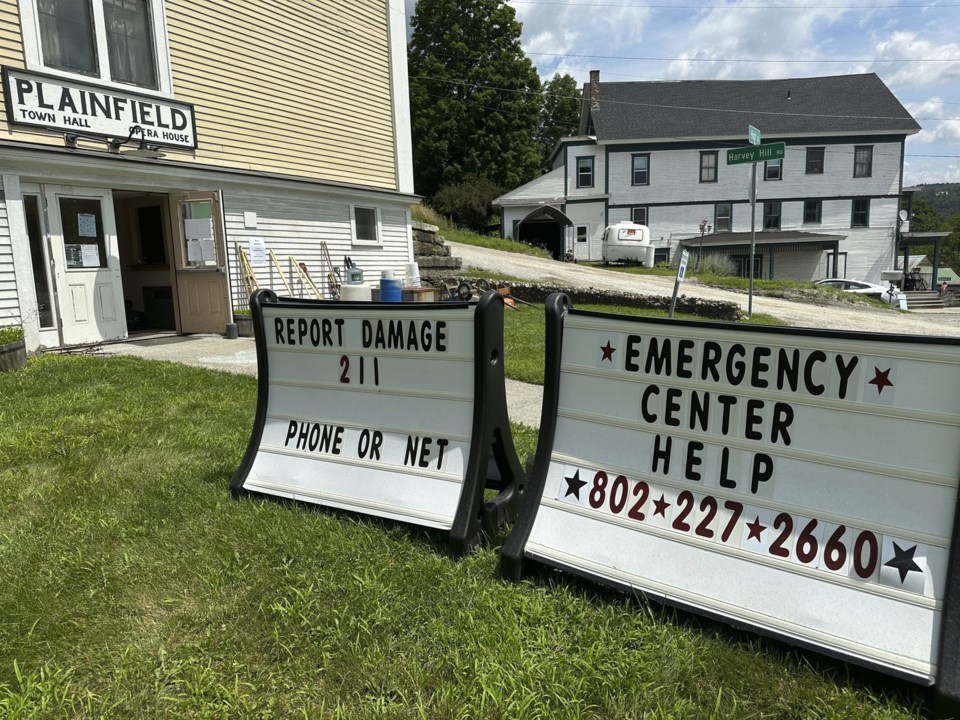Vermont's governor on Tuesday urged residents to report any damage from last week's flooding to the state, even if they plan to do repairs themselves, so that counties can meet the threshold for individual federal assistance.
The flooding from the remnants of Hurricane Beryl damaged homes, knocked out bridges, caused landslides and washed out roads, leaving some people stranded. It happened a year to the day of last July's that left some victims Two people were killed by last week's flooding, including a motorist in Lyndonville and a man who was riding an all-terrain vehicle in Peacham, authorities said.
On Tuesday, a state official warned that severe thunderstorms could hit some of the flood-ravaged parts of the state in the afternoon and evening and bring high winds, limited flash flooding and power outages.
“Vermont's large rivers are still high but the predicted rainfall is not expected to cause them to exceed their banks or cause widespread flooding,” said Daniel Batsie, deputy public safety commissioner.
Since last week's flooding, about 1,500 reports of damage have come in, ranging from minor flooding to major structural damage, Batsie said. As of Thursday, 50 homes were reported to be uninhabitable but it's unclear how many still are and how many people were displaced, he said. The state is helping farms and businesses report damage and so far about 100 such claims have been reported, Batsie said. Vermonters should call 211 or visit to report damage.
“If your house, basement, or garage flooded, if you have damage to your home or property as the result of the storm, and that includes driveways, equipment and vehicles — it's pretty broad — please report it to 211," Gov. Phil Scott said. "You may not think you need the help but by reporting your damage you're helping your neighbors.”
While Scott said he's heard in recent days about towns coming together and organizing volunteer efforts, he urged Vermonters to assist flood victims by checking on neighbors, helping to muck out basements, move debris or pick up supplies.
“Even a few hours can make a big difference for someone who's been at it for a while, especially in this heat,” Scott said.
Since last week's flooding, the number of closed sections of state roads has dropped from 54 to 12 mostly because of eight flood-damaged bridges, Transportation Secretary Joe Flynn said. Some railroads have been repaired but the Amtrak Vermonter line remains closed from Springfield to St. Albans, he said.
After the flooding, the Vermont Agency of Natural Resources has received numerous inquiries about river dredging, said Secretary Julie Moore.
“Make no mistake because many towns and village centers are built along rivers here in Vermont, dredging is an important river management tool necessary to reduce future flood damage to roads and homes, bridges and businesses," she said. After last summer's floods the agency approved more than 400 next flood measures, including dozens in the last week, such dredging and streambank stabilization, Moore said.
Vermont has more than 7,000 miles of rivers and streams and how waterways are treated in communities impacts and can present risks to those who live downstream, she said. Dredging will not solve flooding, she said. It will help alleviate it in certain circumstances but comes with significant risk and needs to be done strategically so it does not further destabilize rivers before the next flood, Moore said.
Without thinking about the whole river system, an approach that may better protect your property could have catastrophic consequences for your neighbors," she said.
Lisa Rathke, The Associated Press




